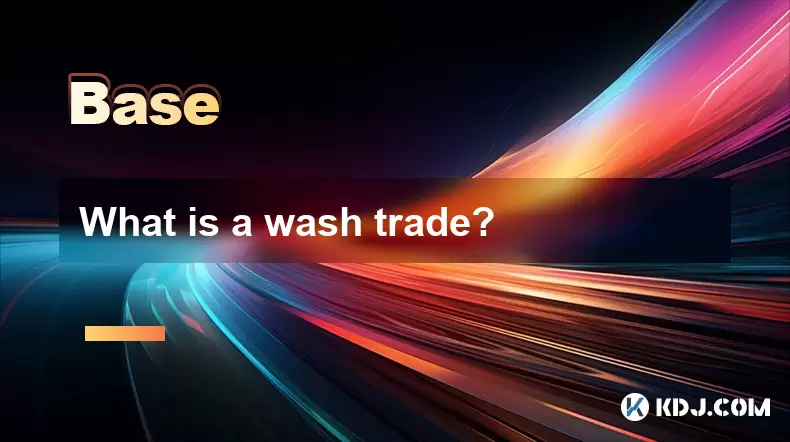-
 Bitcoin
Bitcoin $107,944.5476
-1.49% -
 Ethereum
Ethereum $2,537.3599
-1.67% -
 Tether USDt
Tether USDt $1.0000
-0.04% -
 XRP
XRP $2.2617
-0.67% -
 BNB
BNB $659.4219
-0.33% -
 Solana
Solana $148.8752
-2.32% -
 USDC
USDC $0.9999
-0.02% -
 TRON
TRON $0.2872
-0.42% -
 Dogecoin
Dogecoin $0.1681
-4.63% -
 Cardano
Cardano $0.5765
-2.70% -
 Hyperliquid
Hyperliquid $37.4823
-6.64% -
 Bitcoin Cash
Bitcoin Cash $496.2859
-0.35% -
 Sui
Sui $2.8557
-2.94% -
 Chainlink
Chainlink $13.2566
-2.57% -
 UNUS SED LEO
UNUS SED LEO $9.0527
0.05% -
 Stellar
Stellar $0.2469
-2.25% -
 Avalanche
Avalanche $17.8270
-3.57% -
 Shiba Inu
Shiba Inu $0.0...01160
-2.59% -
 Toncoin
Toncoin $2.7462
-3.29% -
 Hedera
Hedera $0.1561
-2.61% -
 Litecoin
Litecoin $85.9968
-2.22% -
 Monero
Monero $315.7521
-2.22% -
 Dai
Dai $1.0000
-0.01% -
 Polkadot
Polkadot $3.3517
-2.18% -
 Ethena USDe
Ethena USDe $1.0001
0.01% -
 Bitget Token
Bitget Token $4.2999
-3.31% -
 Uniswap
Uniswap $7.3784
-1.57% -
 Aave
Aave $278.7823
-3.32% -
 Pepe
Pepe $0.0...09854
-3.51% -
 Pi
Pi $0.4560
-3.30%
What is a wash trade?
2025/07/08 15:49

Understanding the Concept of a Wash Trade
A wash trade refers to a type of deceptive trading activity where an individual or group simultaneously buys and sells assets to create artificial trading volume. This practice is commonly associated with cryptocurrency markets, where it can mislead other traders and investors by inflating the perceived popularity or liquidity of a particular digital asset.
In this scenario, the same entity controls both sides of the trade—meaning they place buy and sell orders for the same cryptocurrency, often at similar prices and within a short time frame. The goal is not to profit from price movement but to manipulate market perception. As a result, wash trading can distort key market indicators such as trading volume, order book depth, and price action.
Wash trading is considered unethical and, in many jurisdictions, illegal.
It undermines market integrity and can lead to regulatory scrutiny.How Does a Wash Trade Work?
To understand how a wash trade works, consider a situation where a trader wants to boost the apparent demand for a specific cryptocurrency. They may use multiple accounts on the same exchange or collude with another party to execute trades between these accounts.
- The trader places a buy order from one account.
- At the same time, they place a matching sell order from another account.
- These trades are executed automatically, creating the illusion of real market activity.
Because no real money changes hands beyond transaction fees, the net financial gain for the involved parties is negligible. However, the impact on market data is significant. Exchanges often display 24-hour trading volume prominently, and high volume can attract new traders who assume there's strong interest in that asset.
This manipulation technique is particularly prevalent among low-cap altcoins.
These cryptocurrencies have smaller market capitalizations and lower natural trading volumes, making them easier targets for artificial inflation.Identifying Wash Trading Activity
Detecting wash trading can be challenging, especially for casual observers. However, several red flags may indicate suspicious behavior:
- Sudden spikes in trading volume without corresponding news or developments.
- Repetitive trades occurring at fixed intervals or involving the same price levels.
- A small number of addresses controlling most of the trading activity.
Blockchain analytics tools and advanced market analysis software can help uncover patterns consistent with wash trading. For instance, tracking wallet addresses involved in numerous trades over a short period can reveal coordinated efforts to inflate volume.
Exchanges themselves sometimes engage in or tolerate wash trading to appear more liquid.
Some platforms offer incentives based on trading volume, encouraging users to generate fake activity.Legal and Ethical Implications
From a legal standpoint, wash trading is generally prohibited under securities laws in many countries. In the United States, for example, it violates Commodity Exchange Act regulations enforced by the Commodity Futures Trading Commission (CFTC).
Cryptocurrency exchanges operating without clear regulatory oversight may not face immediate consequences, but as governments increase scrutiny of crypto markets, enforcement actions become more likely.
Ethically, wash trading damages investor trust and distorts fair market dynamics. Traders relying on volume metrics to make decisions may end up investing in assets with artificially inflated values, leading to losses when the manipulation ceases.
Regulators are increasingly focusing on combating wash trading in crypto markets.
Tools like transaction tracing and AI-based anomaly detection are being deployed to identify and penalize offenders.Impact on Market Participants
The effects of wash trading extend beyond misleading volume statistics. Retail investors, in particular, suffer due to reliance on inaccurate market signals. When they base investment decisions on manipulated data, they risk entering positions that lack genuine support.
For institutional investors, the presence of wash trading complicates due diligence processes and increases the difficulty of assessing true market conditions. It also raises concerns about the legitimacy of certain exchanges and tokens listed on them.
Market analysts and researchers must filter out wash trading noise to provide accurate insights.
Failure to do so can result in flawed reports and recommendations.Additionally, projects launching new tokens may find it harder to build credibility if their trading volume is suspected of being artificially generated. This can hinder adoption and long-term growth prospects.
Frequently Asked Questions
Q: Can wash trading affect the price of a cryptocurrency?
While wash trading doesn't directly change the price of a cryptocurrency, it can indirectly influence it by creating false demand or supply signals. If enough traders react to the artificial volume, it might trigger real buying or selling pressure.
Q: Are all high-volume trades considered wash trades?
No, high trading volume alone does not indicate wash trading. Legitimate factors such as major news events, product launches, or macroeconomic shifts can cause surges in volume. Suspicion arises when volume increases without apparent external causes.
Q: How do exchanges benefit from allowing wash trading?
Some exchanges encourage or ignore wash trading to appear more active than they are. Higher reported volume can attract more users, increase listing fees for new tokens, and improve rankings on third-party platforms that list popular exchanges.
Q: What tools can detect wash trading?
Several blockchain analytics firms and market intelligence platforms offer services to detect wash trading. These include tools that track wallet address activity, analyze order book patterns, and flag abnormal trading behaviors using machine learning algorithms.
免責事項:info@kdj.com
提供される情報は取引に関するアドバイスではありません。 kdj.com は、この記事で提供される情報に基づいて行われた投資に対して一切の責任を負いません。暗号通貨は変動性が高いため、十分な調査を行った上で慎重に投資することを強くお勧めします。
このウェブサイトで使用されているコンテンツが著作権を侵害していると思われる場合は、直ちに当社 (info@kdj.com) までご連絡ください。速やかに削除させていただきます。
- ミームのコイン、早期投資、放物線の成長:波をつかむ
- 2025-07-08 22:30:12
- Crypto、Institutions、BTC&ETH:新しい時代の夜明け
- 2025-07-08 22:30:12
- Bitcoin Solaris Market Launch: A New Dawn or Just Another Altcoin?
- 2025-07-08 20:30:12
- Bitcoin, Memecoin Mania, and the All-Time High Hunt: What's Next?
- 2025-07-08 20:30:12
- Byrq Coin: Scam or Savior? A Deep Dive Review
- 2025-07-08 20:50:12
- Shiba Inu's Burn Rate Bonanza: Can Crypto Burns Ignite a Price Rally?
- 2025-07-08 20:50:12
関連知識

What is a user-generated content (UGC) NFT platform?
2025-07-04 13:49:21
<h3>Understanding the Concept of a UGC NFT Platform</h3><p>A user-generated content (UGC) NFT platform is a digital marketplace or e...

What is composability in DeFi?
2025-07-06 16:07:28
<h3>Understanding the Concept of Composability in DeFi</h3><p>Composability in DeFi refers to the ability of decentralized finance p...

What is a "crypto primitive"?
2025-07-05 22:14:34
<h3>Defining the Concept of a Crypto Primitive</h3><p>In the context of blockchain and cryptocurrency, a crypto primitive refers to ...

What is a crypto narrative?
2025-07-07 22:56:30
<h3>Defining the Concept of a Crypto Narrative</h3><p>A crypto narrative refers to the overarching story or theme that drives intere...

What is a stealth launch?
2025-07-08 06:42:39
<h3>What Exactly Defines a Stealth Launch in Cryptocurrency?</h3><p>A stealth launch refers to the practice of launching a cryptocur...

What is a fair launch?
2025-07-05 19:31:58
<h3>Understanding the Concept of a Fair Launch</h3><p>A fair launch refers to the release of a cryptocurrency or blockchain project ...

What is a user-generated content (UGC) NFT platform?
2025-07-04 13:49:21
<h3>Understanding the Concept of a UGC NFT Platform</h3><p>A user-generated content (UGC) NFT platform is a digital marketplace or e...

What is composability in DeFi?
2025-07-06 16:07:28
<h3>Understanding the Concept of Composability in DeFi</h3><p>Composability in DeFi refers to the ability of decentralized finance p...

What is a "crypto primitive"?
2025-07-05 22:14:34
<h3>Defining the Concept of a Crypto Primitive</h3><p>In the context of blockchain and cryptocurrency, a crypto primitive refers to ...

What is a crypto narrative?
2025-07-07 22:56:30
<h3>Defining the Concept of a Crypto Narrative</h3><p>A crypto narrative refers to the overarching story or theme that drives intere...

What is a stealth launch?
2025-07-08 06:42:39
<h3>What Exactly Defines a Stealth Launch in Cryptocurrency?</h3><p>A stealth launch refers to the practice of launching a cryptocur...

What is a fair launch?
2025-07-05 19:31:58
<h3>Understanding the Concept of a Fair Launch</h3><p>A fair launch refers to the release of a cryptocurrency or blockchain project ...
すべての記事を見る

























































































